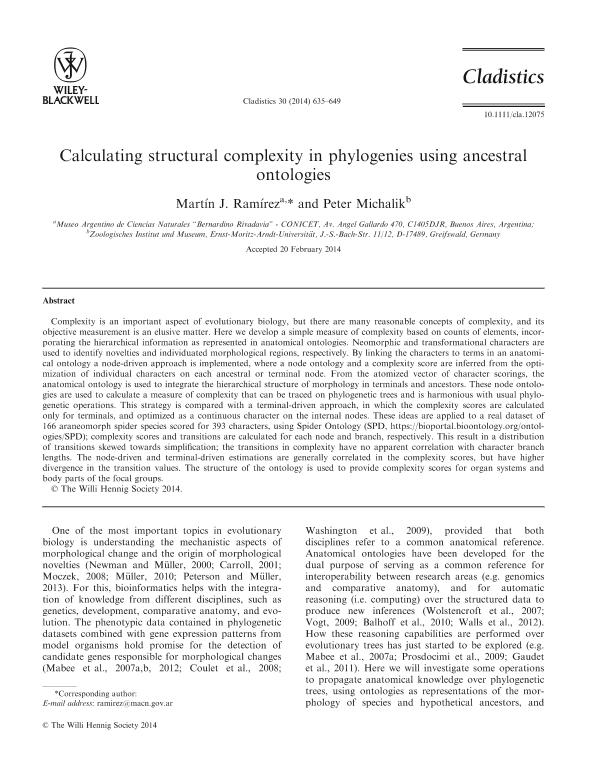Artículo
Calculating structural complexity in phylogenies using ancestral ontologies
Fecha de publicación:
22/04/2014
Editorial:
Wiley Blackwell Publishing, Inc
Revista:
Cladistics
ISSN:
0748-3007
Idioma:
Inglés
Tipo de recurso:
Artículo publicado
Clasificación temática:
Resumen
Complexity is an important aspect of evolutionary biology, but there are many reasonable concepts of complexity, and its objective measurement is an elusive matter. Here we develop a simple measure of complexity based on counts of elements, incorporating the hierarchical information as represented in anatomical ontologies. Neomorphic and transformational characters are used to identify novelties and individuated morphological regions, respectively. By linking the characters to terms in an anatomical ontology a node-driven approach is implemented, where a node ontology and a complexity score are inferred from the optimization of individual characters on each ancestral or terminal node. From the atomized vector of character scorings, the anatomical ontology is used to integrate the hierarchical structure of morphology in terminals and ancestors. These node ontologies are used to calculate a measure of complexity that can be traced on phylogenetic trees and is harmonious with usual phylogenetic operations. This strategy is compared with a terminal-driven approach, in which the complexity scores are calculated only for terminals, and optimized as a continuous character on the internal nodes. These ideas are applied to a real dataset of 166 araneomorph spider species scored for 393 characters, using Spider Ontology (SPD, https://bioportal.bioontology.org/ontologies/ SPD); complexity scores and transitions are calculated for each node and branch, respectively. This result in a distribution of transitions skewed towards simplification; the transitions in complexity have no apparent correlation with character branch lengths. The node-driven and terminal-driven estimations are generally correlated in the complexity scores, but have higher divergence in the transition values. The structure of the ontology is used to provide complexity scores for organ systems and body parts of the focal groups.
Palabras clave:
Anatomical Ontology
,
Systematics
,
Automated Reasoning
Archivos asociados
Licencia
Identificadores
Colecciones
Articulos(MACNBR)
Articulos de MUSEO ARG.DE CS.NAT "BERNARDINO RIVADAVIA"
Articulos de MUSEO ARG.DE CS.NAT "BERNARDINO RIVADAVIA"
Citación
Ramirez, Martin Javier; Michalik, Peter; Calculating structural complexity in phylogenies using ancestral ontologies; Wiley Blackwell Publishing, Inc; Cladistics; 30; 6; 22-4-2014; 635-649
Compartir
Altmétricas




